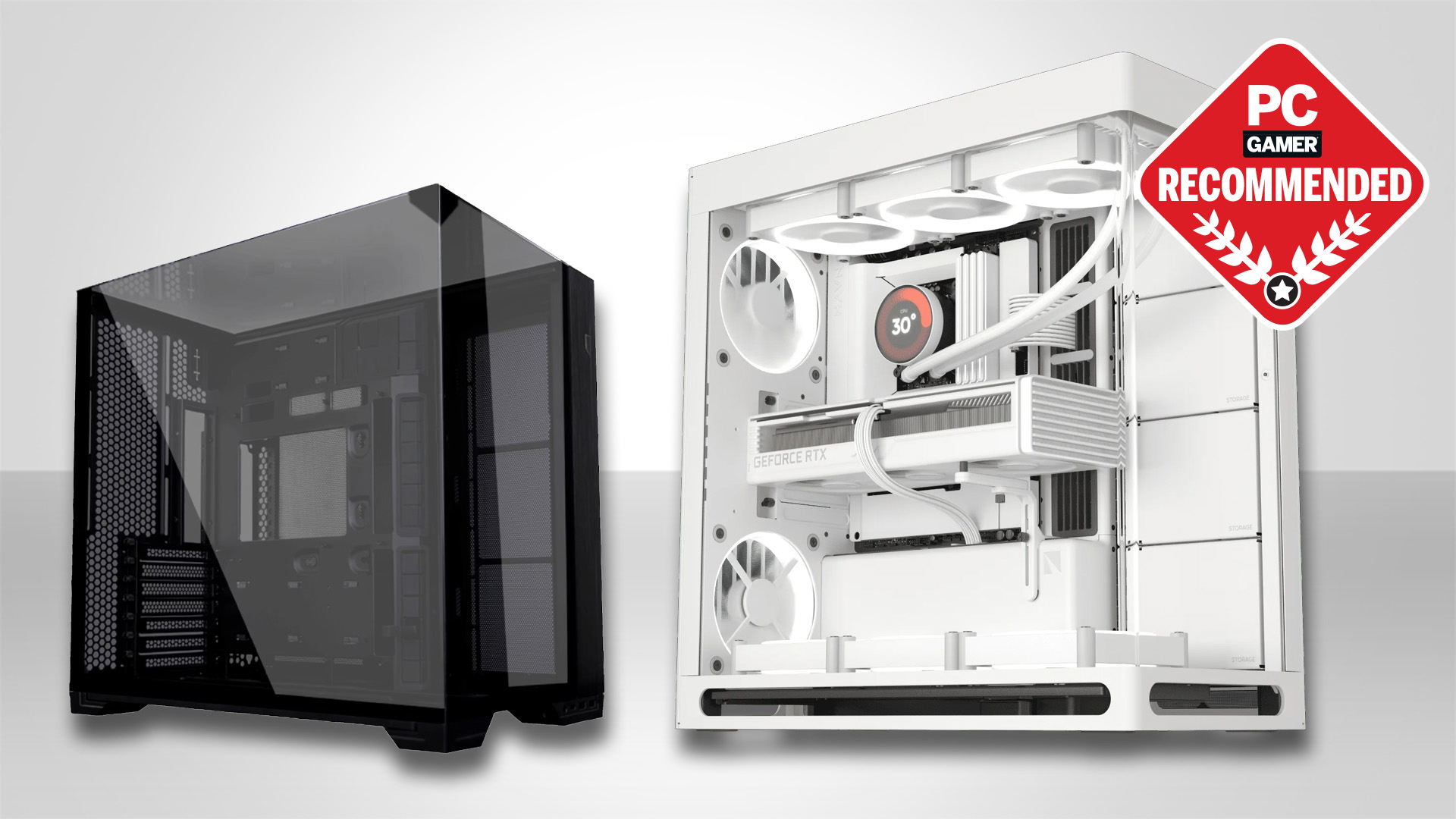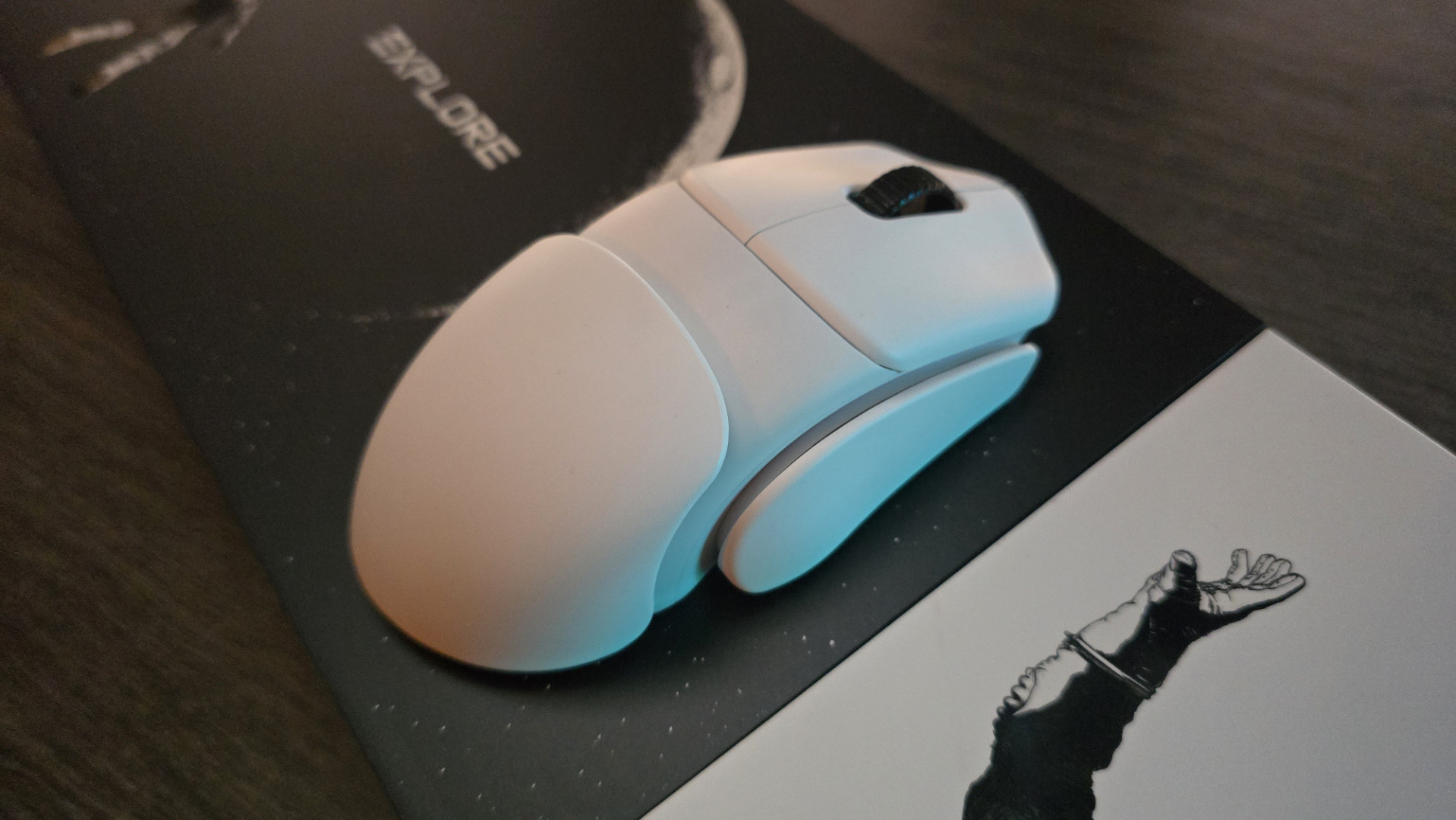Valve just quietly redefined what PC gaming can be all while an increasingly delusional Microsoft desperately tries to tell everyone their PC is an Xbox now
Valve has been loosening a desperate Microsoft's grip on PC gaming one gnarled finger at a time.
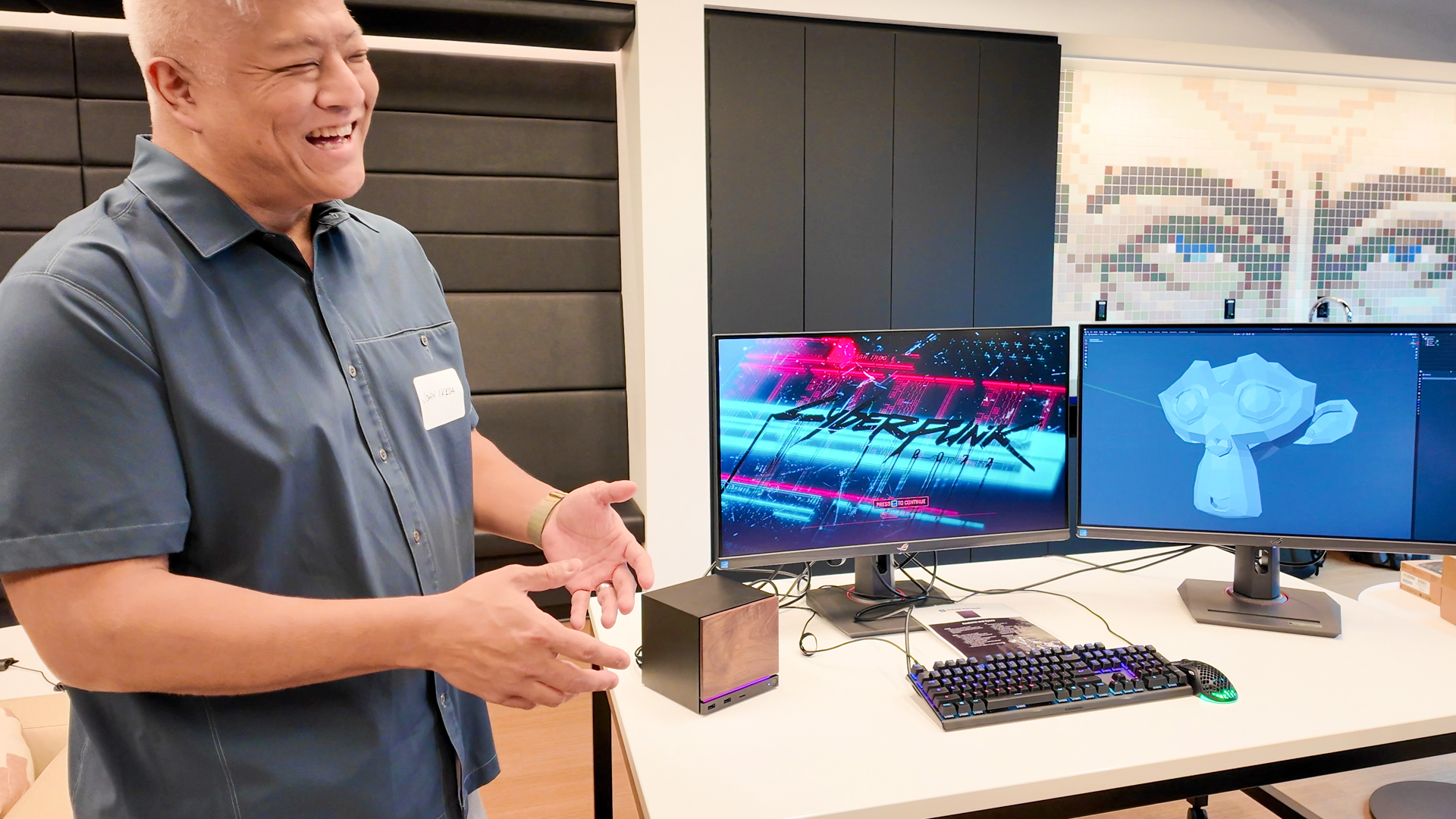
On the face of it, the latest announcement from Valve seems pretty straightforward. The reductionists will tell you all it's unveiled is a last-gen gaming PC (that better be cheap), a controller that's just two halves of a Steam Deck jammed together (like all the mockups that have been doing the rounds since the handheld first released), and a Steam-badged Quest 3 (at a time when no-one actually cares about virtual reality).

Steam Frame: Valve's new wireless VR headset
Steam Machine: Compact living room gaming box
Steam Controller: A controller to replace your mouse
But that's fundamentally missing the point. With this new ecosystem launch, Valve has just pried Microsoft's last little finger off the previously vice-like grip it once had on PC gaming. No-one needs Microsoft to play PC games anymore—not you, not the devs, not the manufacturers of gaming rigs. Heck, with SteamOS coming to Arm, you may not even need x86 CPUs, either.
Windows has long been the de facto operating system for gaming PCs; practically every PC game has been developed for it and the x86 chips that make up the vast majority of desktops and laptops the world across. But that hegemony is slowly being eroded and Valve is right at the heart of making that happen.
I'm not necessarily talking about the new Steam Machine here, despite that being essentially why Valve kicked off the whole SteamOS/Steam Machine push over a decade ago. In response to Windows 8 and its seeming desire to lock down all apps running on Windows to its own marketplace, Gabe Newell explicitly said "I think Windows 8 is a catastrophe for everyone in the PC space," before resolutely failing to get SteamOS working for the third-parties he'd convinced to build mini gaming PCs for him.
Still, having a cute wee companion cube as a PC console next to your TV—one that's capable of (upscaled) 4K gaming—is pretty tantalising. But the whole reason it exists is because Valve knows a ton of people are already doing this with their Steam Decks anyways.
"Our customers kind of beat us to it," says Yazan Aldehayyat, a Valve engineer who's worked on both the Deck and new Steam Machine.
So yeah, it's not revolutionary in and of itself. Nor is that controller. The new Steam Controller is certainly vastly improved over the original pad Valve released alongside the abortive Steam Machines push a decade ago, but it is just a controller designed to offer the same Steam Deck functionality from your sofa.
Keep up to date with the most important stories and the best deals, as picked by the PC Gamer team.
The Steam Frame, however, is far more representative of Valve's desire to open up PC gaming to a new paradigm. It's not just a VR headset. I mean, it is a VR headset, but both what you can do with it and what it means for the PC gaming ecosystem as a whole makes it far more than that. As a bit of a catch-up, the Frame is a standalone virtual reality headset designed along the same lines as the Meta Quest 3, with similar specs, but one that's been created more as a PCVR streaming device.
"We see Steam Frame as a streaming first headset," says Valve's Lawrence Yang of its capabilities of wirelessly beaming content at high speed, and high fidelity from your gaming PC, whether you're playing a VR game or not.



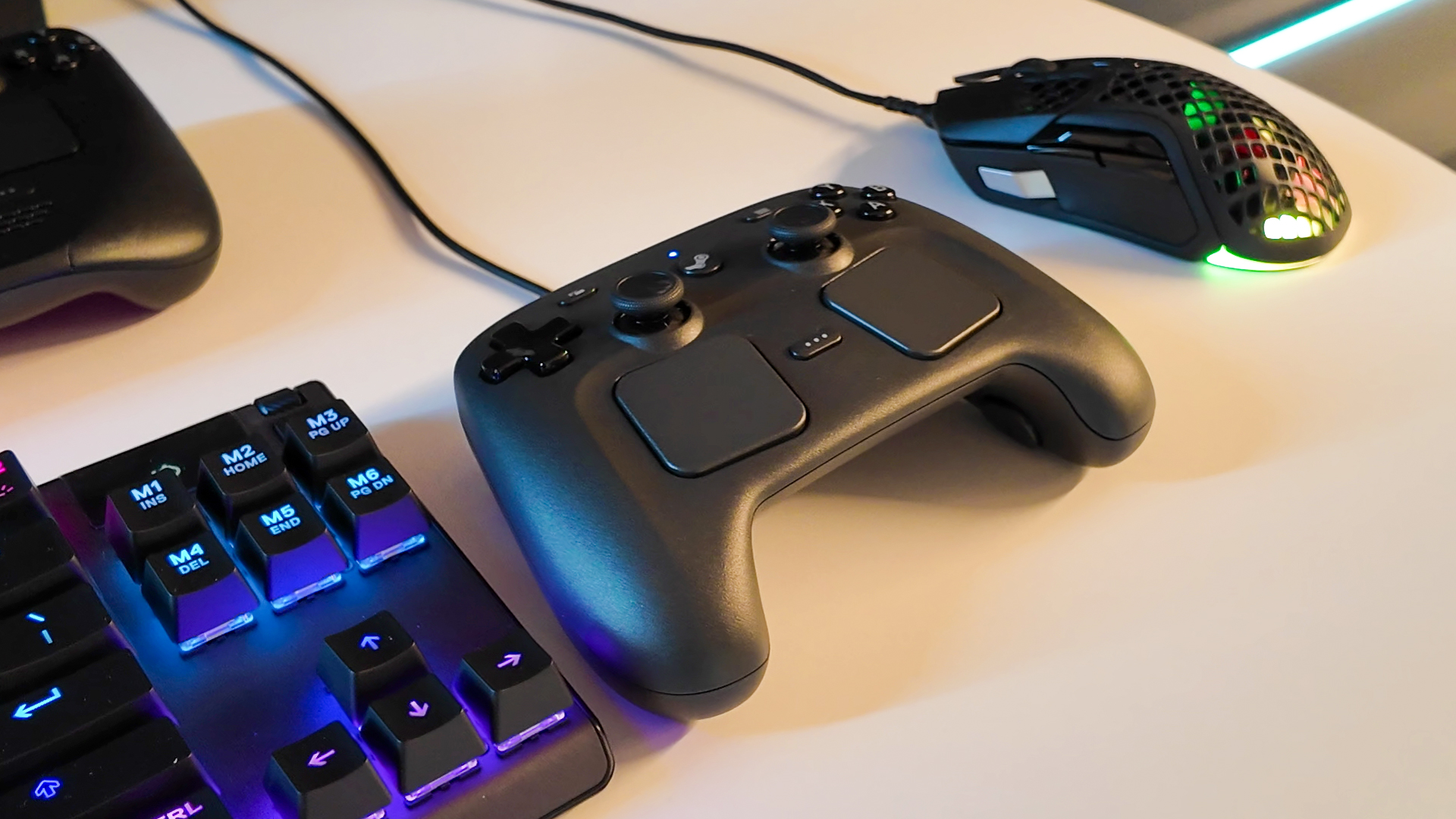
This is one of the key parts for me; a new way to play my games. I've spoken with Jacob about his experiences using the Steam Frame with standard PC games and it's very much like using your gaming PC with a disembodied monitor screen looming large in your vision. The comfort of the Frame is obviously paramount. And that's especially true for a device that Valve is talking about being something you put on and then decide what you're going to play, again whether VR or not.
But Jacob and Tim have both spent time with it and call it a "remarkably well-balanced" headset. Jacob even had a nice lie down in the middle of the Valve offices in Bellevue to test its bedroom ergonomics out.
There are definite Apple Vision Pro vibes here, with the notion of it being the thing you stick on as you sit down at your machine. Could it replace your gaming monitor? Okay, probably not straight away, and not full-time, but I can definitely see myself using the Frame for just general PC gaming outside of VR.
But, again, that's not the only thing the Steam Frame represents. This isn't just Steam Deck innards strapped to your face. This is an Arm-based VR PC, running its own version of SteamOS, and with the FEX translation layer matching up with Proton to allow PC games, designed for both the Windows operating system and the x86 instruction set, to work fairly seamlessly on a device that is anything but.
Think about that for a second. And then think about the fact that Valve has made this so you don't really have to think about it.
The wider idea, beyond just the Steam Frame, is that it you should just be able to stick a non-Microsoft OS on just about any computing device and still run pretty much anything from your Steam gaming library—whether that's an x86-based laptop, desktop, or handheld, or a device that's running an Arm CPU, such as the Windows-on-Arm laptops Qualcomm has produced.

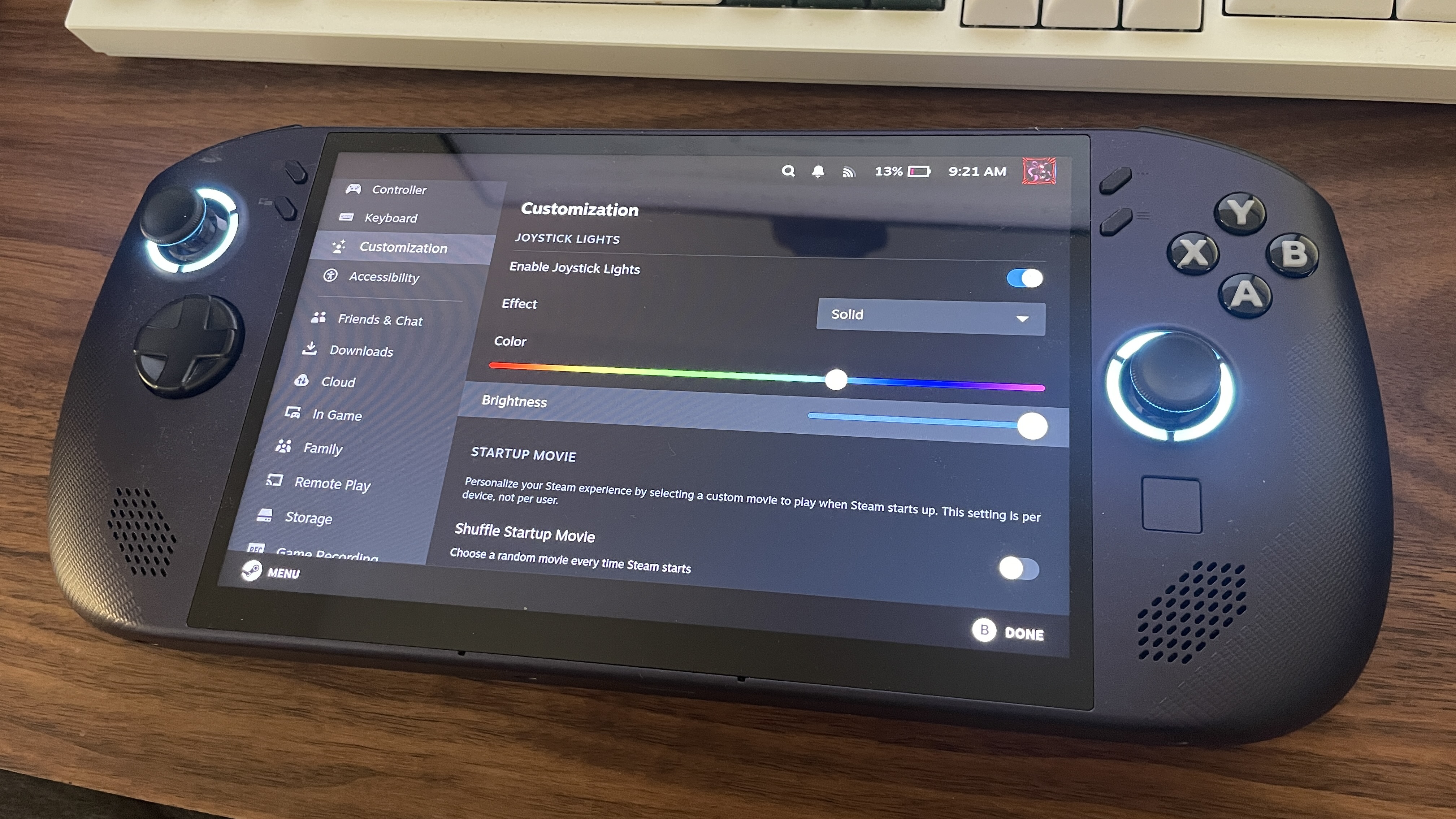
And it doesn't have to be SteamOS, either. Valve clearly doesn't want to have to support every device out there, or it would have released a proper official version of its Arch-based Linux distro you could stick on any handheld, and not just a recovery ISO. It will work with individual companies, however, such as Lenovo and the official SteamOS Legion Go S, and if someone wants to make their own official Steam Machines I'm sure Valve will work to help compatibility for a desktop PC.
Certainly, with a discrete AMD GPU going into the new Steam Machine it's looking like support for AMD graphics cards is going to be baked into SteamOS going forward—though specific Nvidia and Intel support looks like it will take a bit longer.
"The driver that we use for AMD hardware is actually a driver that we develop in house, like we have our own driver team doing that, and so it will take us a little bit to catch up for that on the Nvidia side, and Intel as well," Pierre-Loup Griffais, software engineer at Valve, says.
But Valve's work with Proton, and presumably with FEX, too, means that other Linux distros will get the same opened up support outside the x86 ecosystem. Fedora and Ubuntu are working on ARM64 distros, and Canonical has even released a concept ISO for Snapdragon X Elite laptops, and Valve's efforts ought to massively help on the gaming side of this equation.
And we also have the Fedora-based Bazzite doing Gabe's own work for anyone already looking to ditch x86 reliance on Microsoft's Windows OS, whether for handheld or desktop. I've got Bazzite running on both a OneXPlayer handheld and the Framework Desktop, and Proton is arguably the thing that's made it an almost invisible gaming experience when booting up Windows-based games.
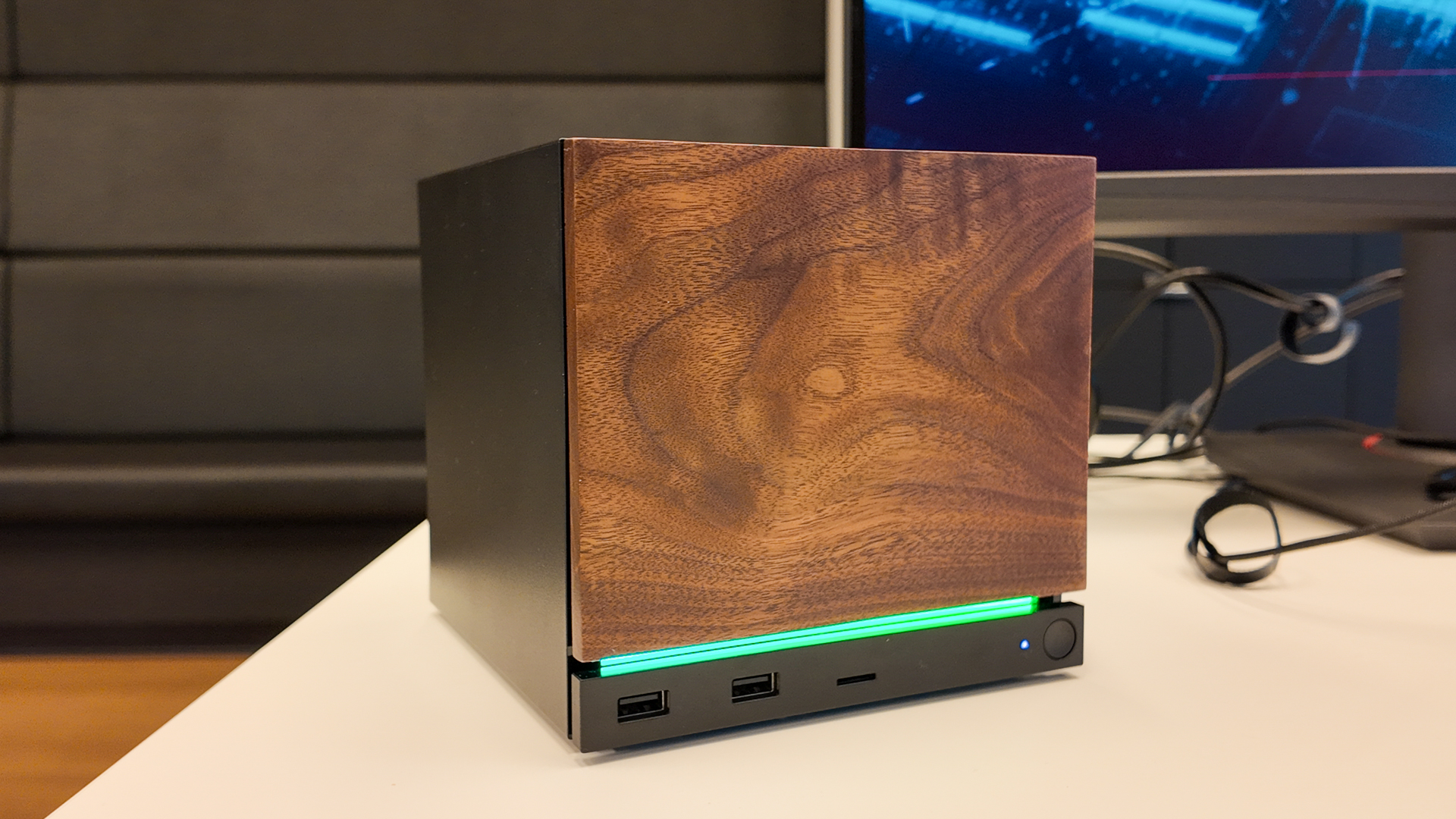
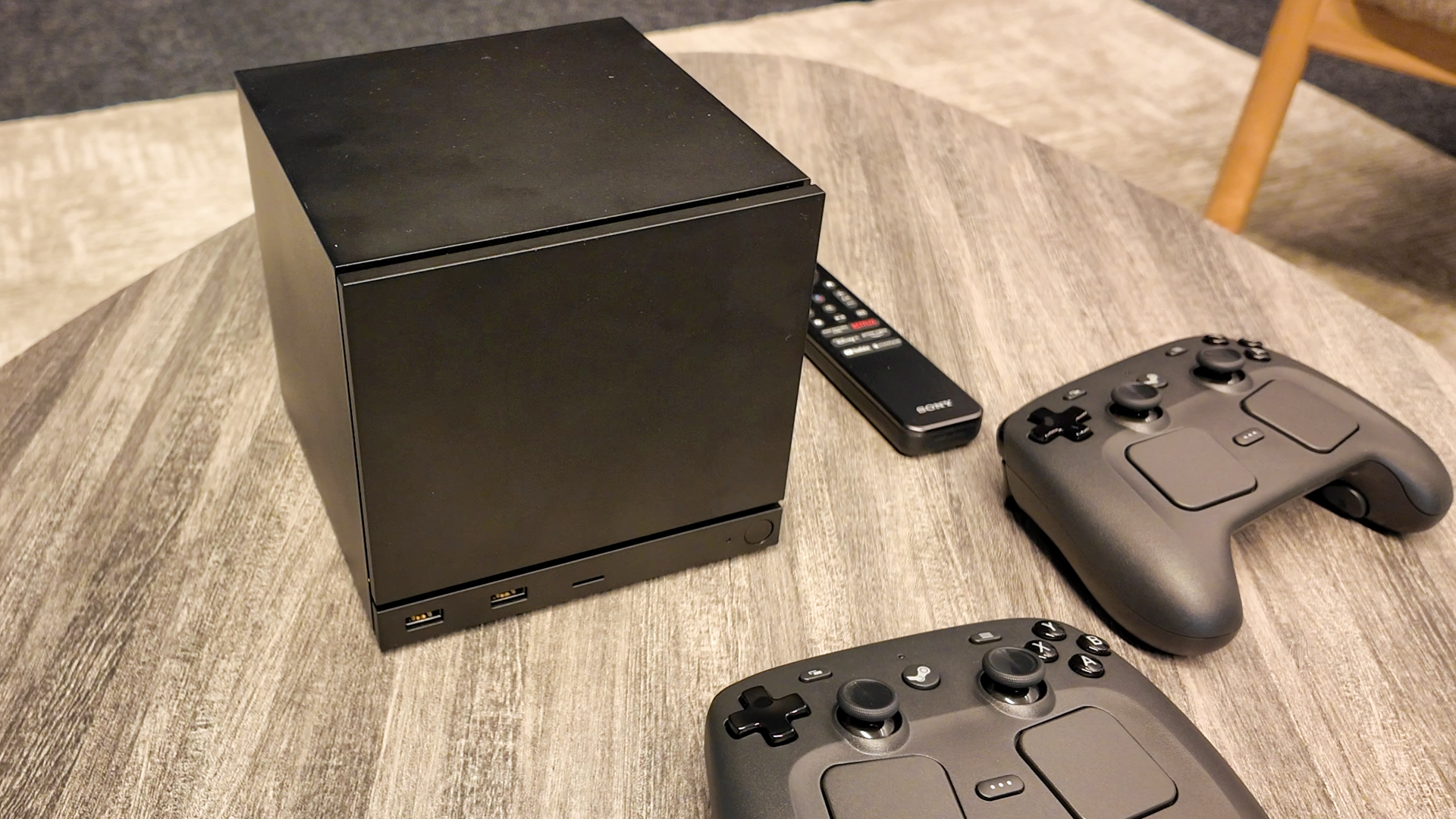
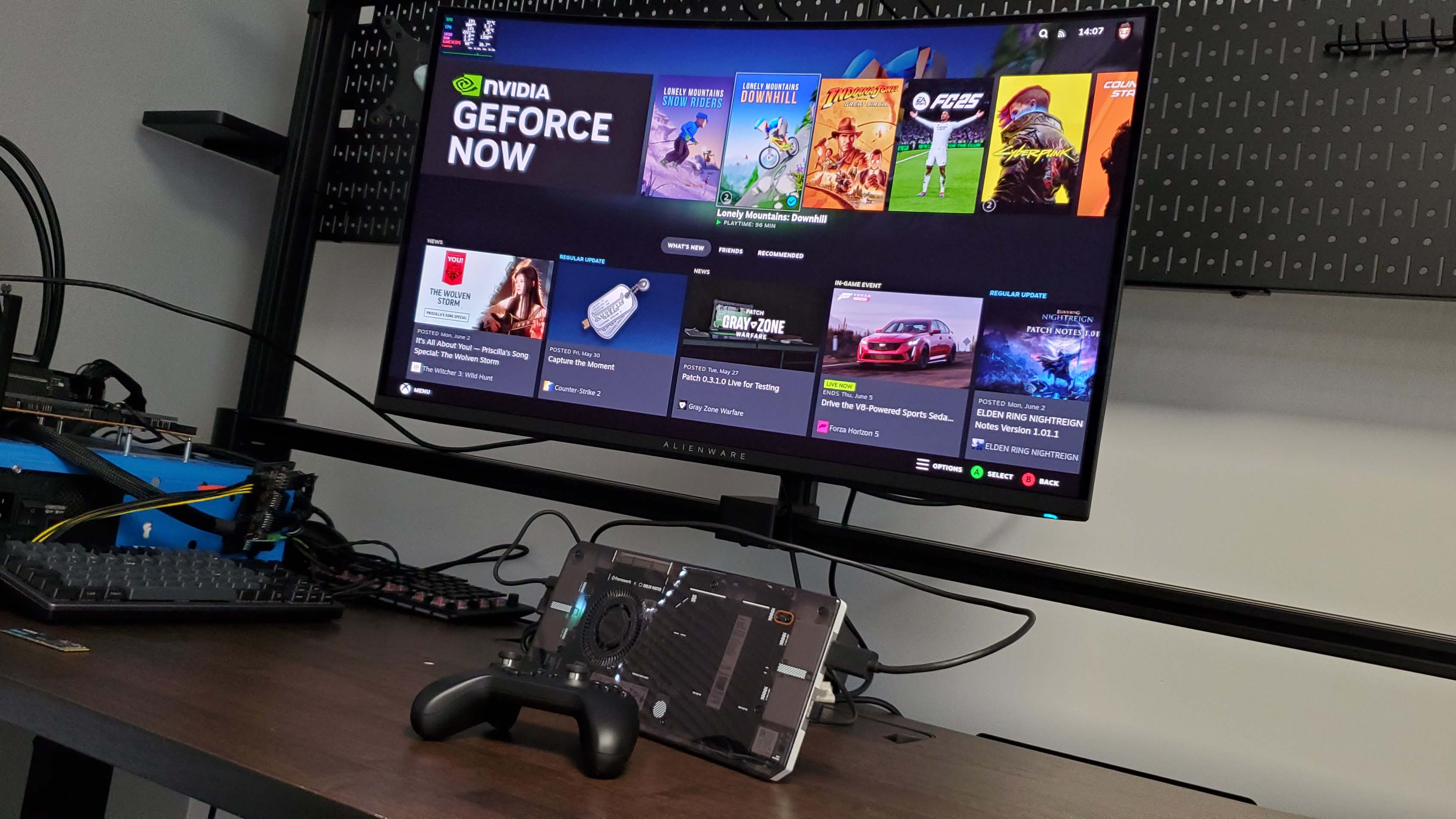
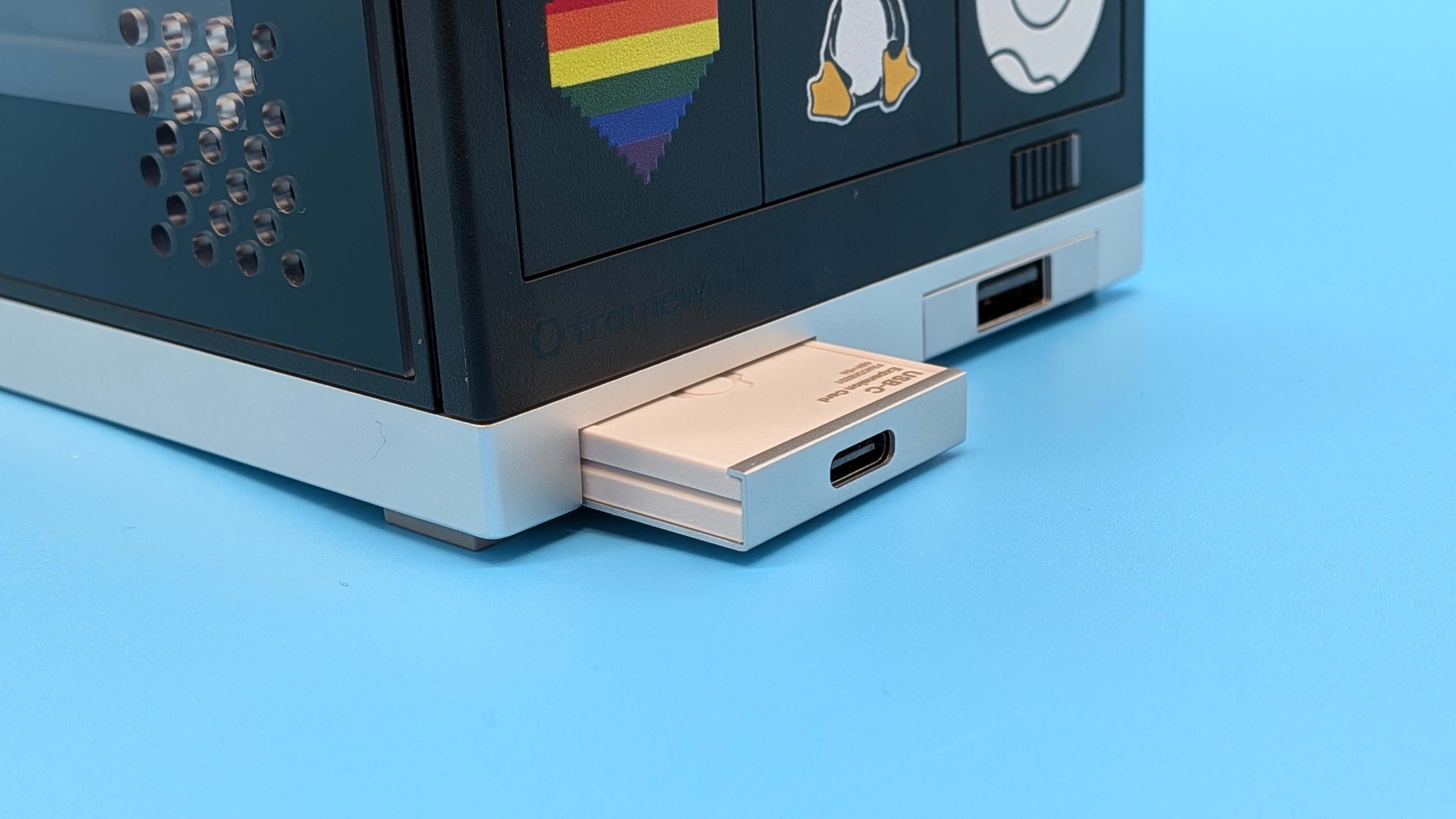
The key thing is that I don't know, or care if I'm running a Linux or Windows version of a game now; the performance is often that good even with emulation layers in play.
This egalitarian approach to PC gaming is entirely laudable and increasingly becoming a simple reality even for non-techie folk. The Steam Deck was the proving ground, the Steam Machine will make it a PC gaming living room console, and the Steam Frame will create a whole "new way to play your entire Steam library, whether it's VR or non-VR," as Valve's Yang puts it to us.
Inevitably there are gaps. Microsoft will still retain control over large sections of the multiplayer gaming community thanks to a number of anticheat apps being utterly wedded to Windows—or more specifically kernel-level protection, something not supported on Linux operating systems. And there will be games, potentially older games, or niche titles, where they don't play nice with Linux, though those are becoming a rarity. There is an overhead with the Arm translation layer, which Valve estimates as around 15% right now, yet again, that is dropping as the engineers have run through different games on the Frame's Qualcomm SoC.
Still, when Microsoft is busy trying to tell you that your PC is now an Xbox, or that your Windows 10 machine is now an obsolete security nightmare, there's a certain level of joy in knowing that PC gaming is now easily outgrowing its clutches. I wonder what Microsoft will do to Windows when it finally notices.

The best PC gaming gear 2025
All our current recommendations











Dave has been gaming since the days of Zaxxon and Lady Bug on the Colecovision, and code books for the Commodore Vic 20 (Death Race 2000!). He built his first gaming PC at the tender age of 16, and finally finished bug-fixing the Cyrix-based system around a year later. When he dropped it out of the window. He first started writing for Official PlayStation Magazine and Xbox World many decades ago, then moved onto PC Format full-time, then PC Gamer, TechRadar, and T3 among others. Now he's back, writing about the nightmarish graphics card market, CPUs with more cores than sense, gaming laptops hotter than the sun, and SSDs more capacious than a Cybertruck.
You must confirm your public display name before commenting
Please logout and then login again, you will then be prompted to enter your display name.
